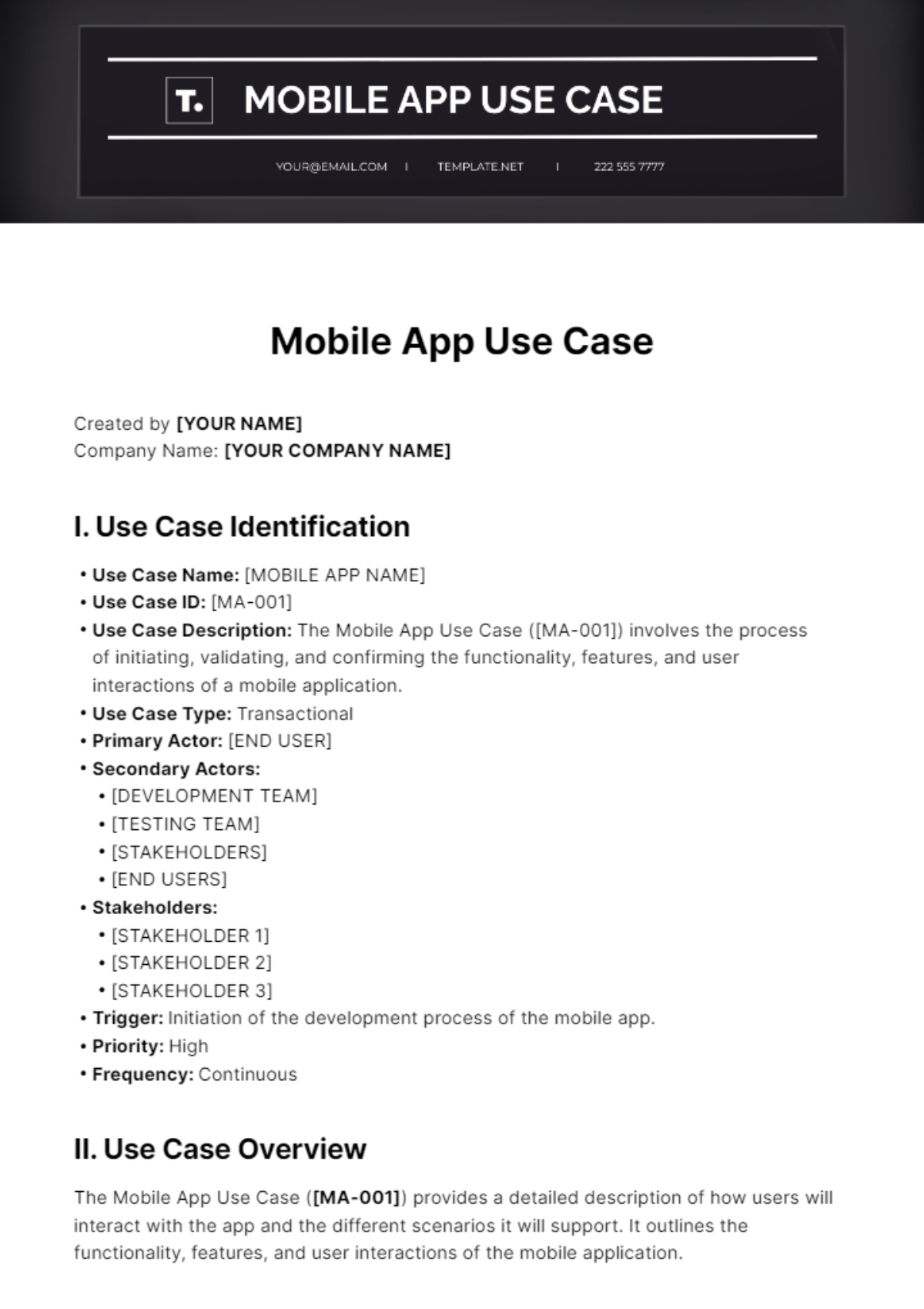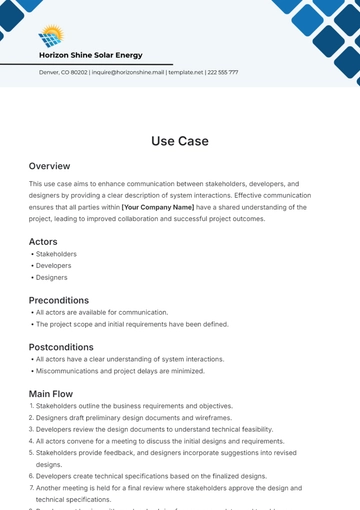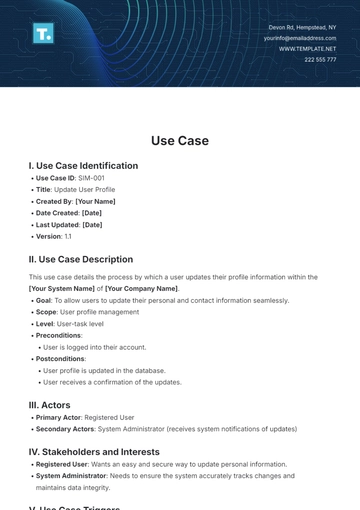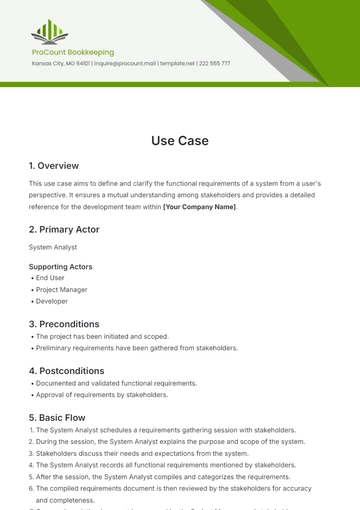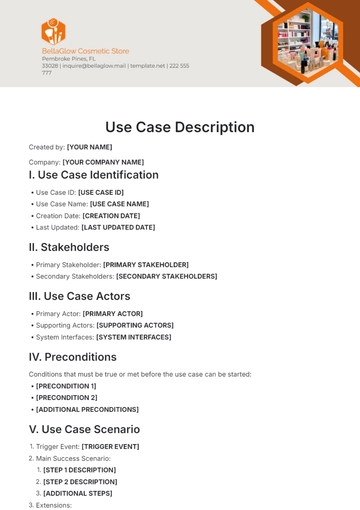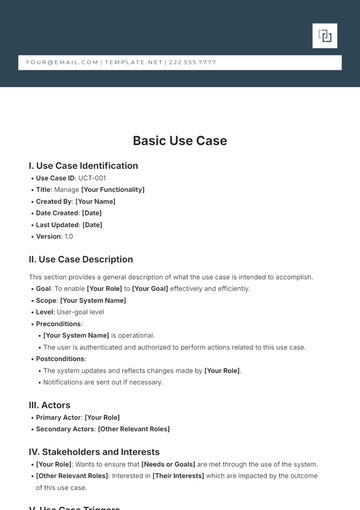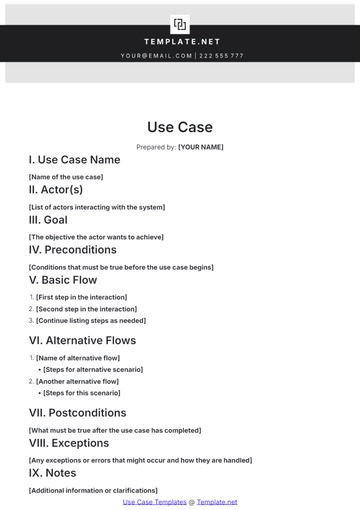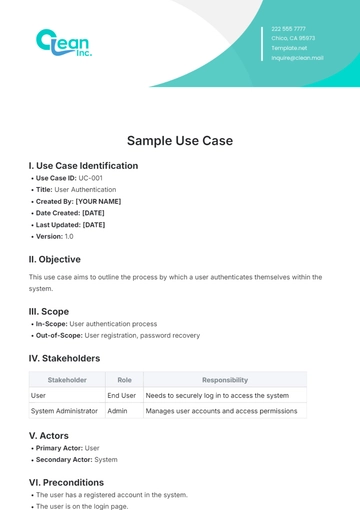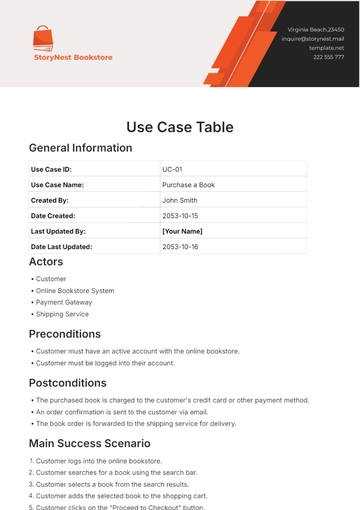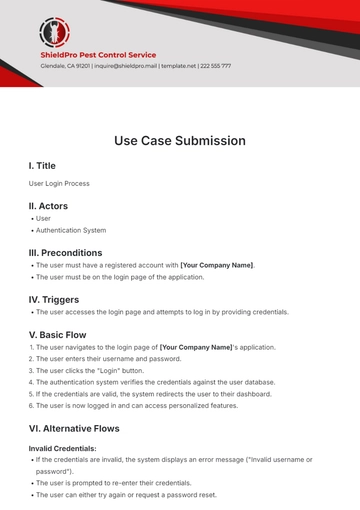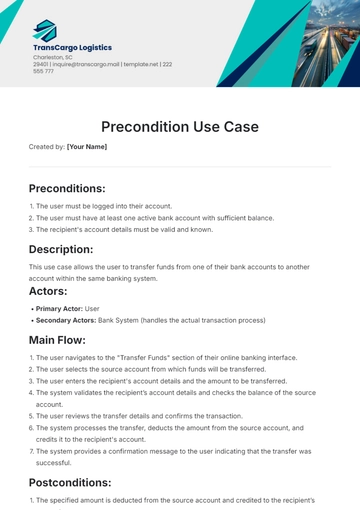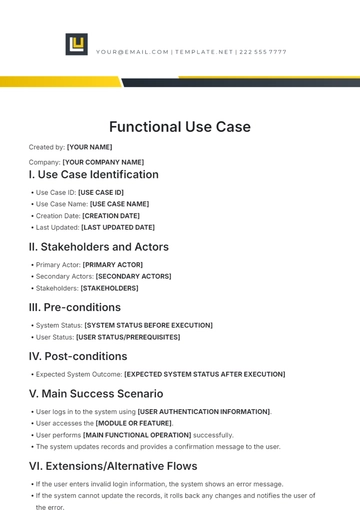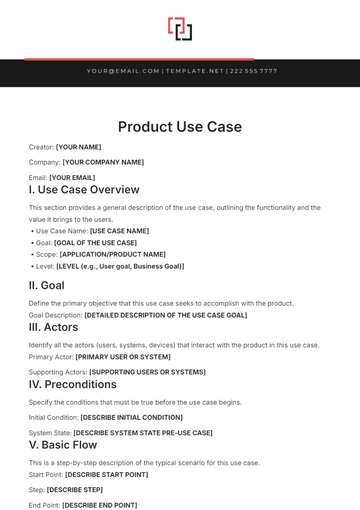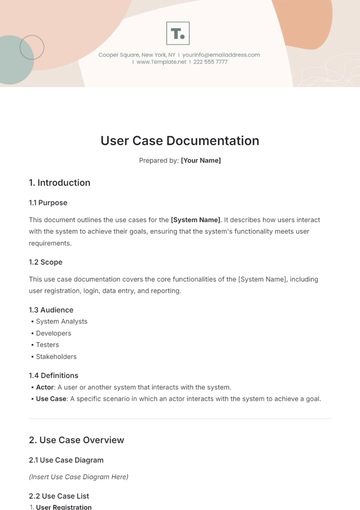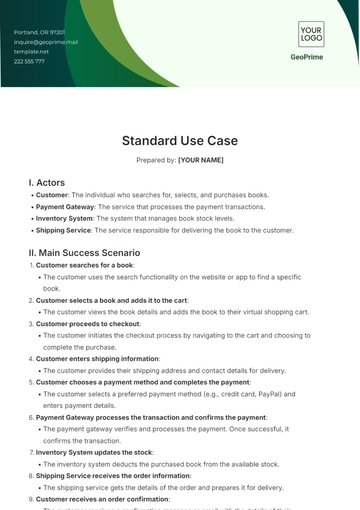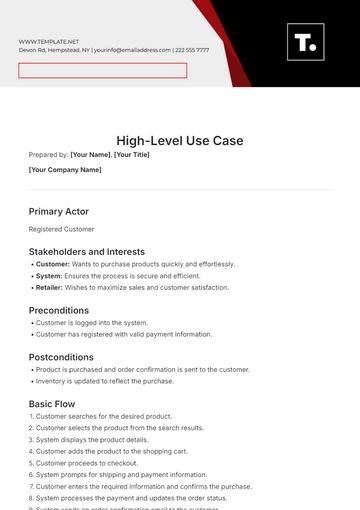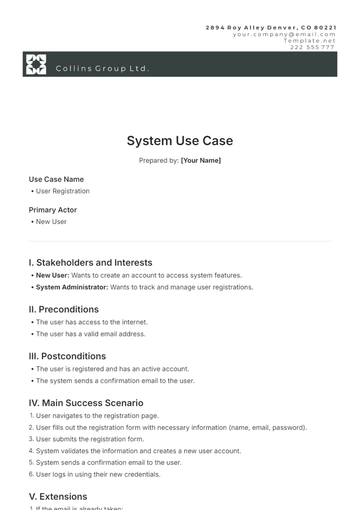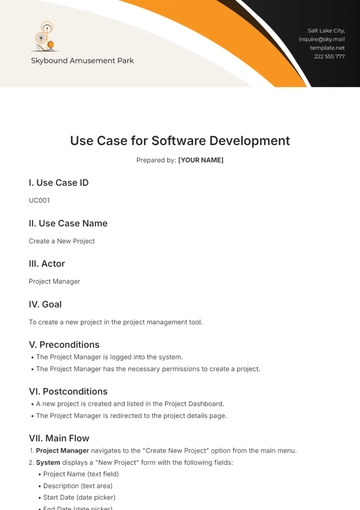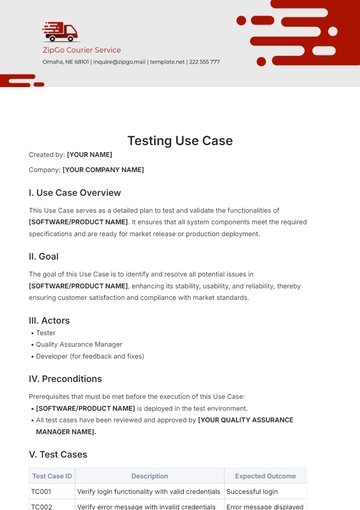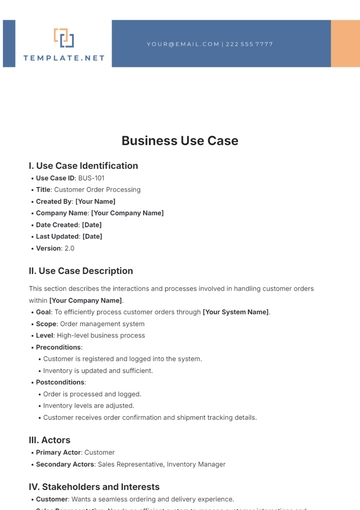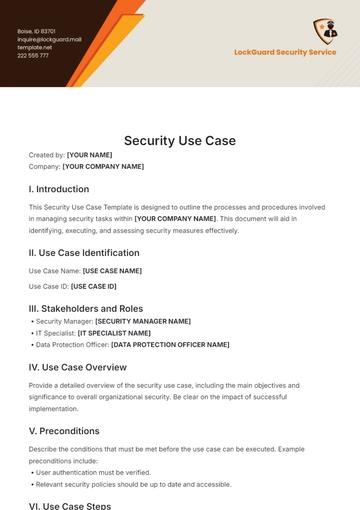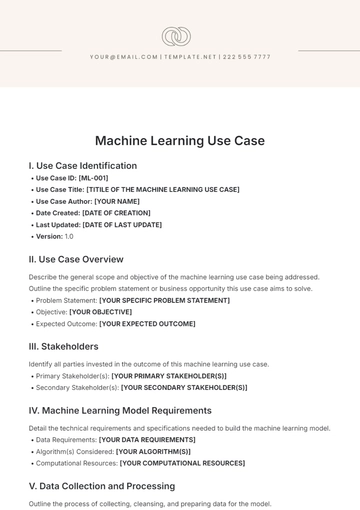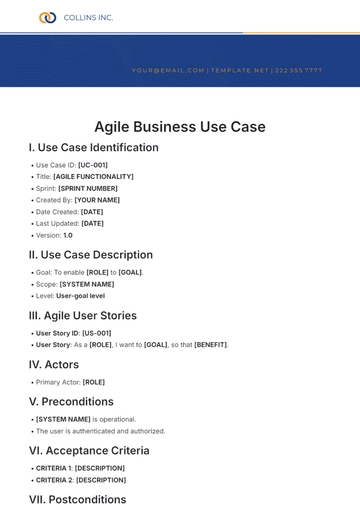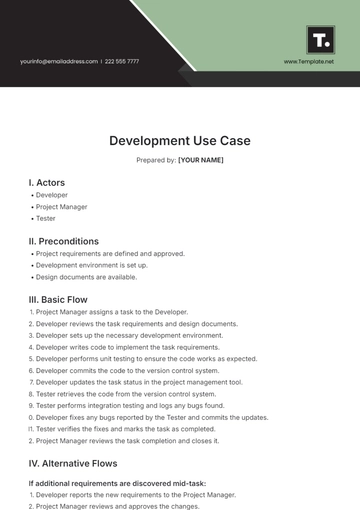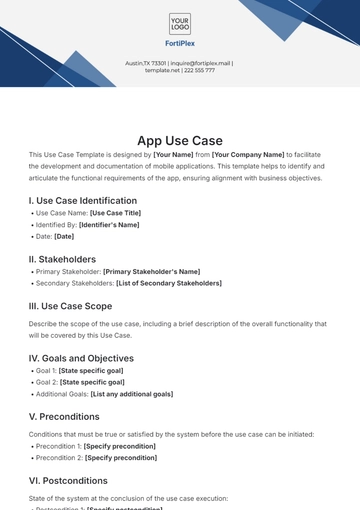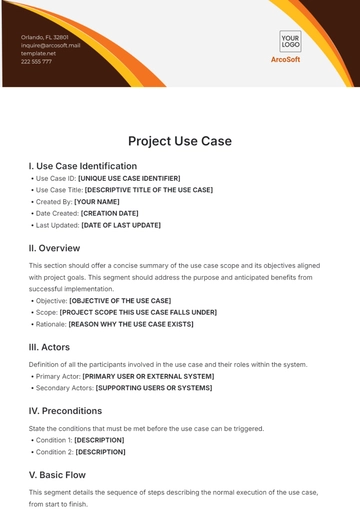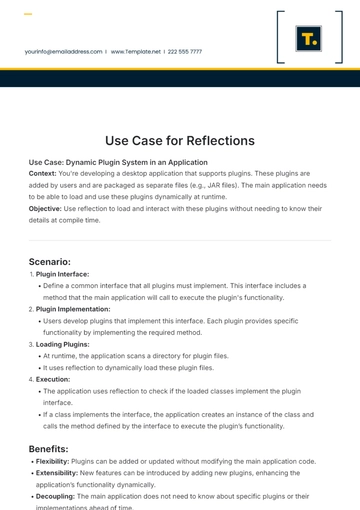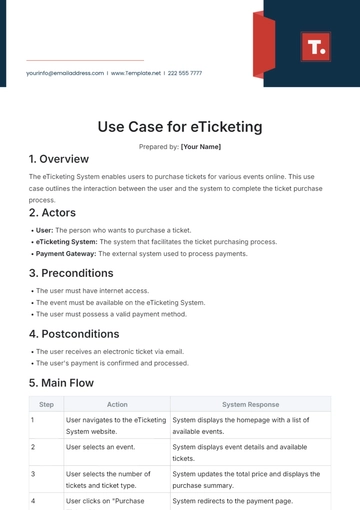Mobile App Use Case
Created by [YOUR NAME]
Company Name: [YOUR COMPANY NAME]
I. Use Case Identification
Use Case Name: [MOBILE APP NAME]
Use Case ID: [MA-001]
Use Case Description: The Mobile App Use Case ([MA-001]) involves the process of initiating, validating, and confirming the functionality, features, and user interactions of a mobile application.
Use Case Type: Transactional
Primary Actor: [END USER]
Secondary Actors:
[DEVELOPMENT TEAM]
[TESTING TEAM]
[STAKEHOLDERS]
[END USERS]
Stakeholders:
[STAKEHOLDER 1]
[STAKEHOLDER 2]
[STAKEHOLDER 3]
Trigger: Initiation of the development process of the mobile app.
Priority: High
Frequency: Continuous
II. Use Case Overview
The Mobile App Use Case ([MA-001]) provides a detailed description of how users will interact with the app and the different scenarios it will support. It outlines the functionality, features, and user interactions of the mobile application.
III. Preconditions
[DEVELOPMENT TEAM] has completed the initial design and planning phase of the mobile app.
The development environment is set up and ready to proceed.
[STAKEHOLDER 1] and [STAKEHOLDER 2] have provided the necessary requirements and specifications for the mobile app.
[DEVELOPMENT TEAM] has access to the required resources and tools for app development.
IV. Main Flow
Step | Description | Actors | Frequency |
|---|
1 | Login and Authentication: Users can log in securely to access the app’s features and content. | [END USER] | Every time the user accesses the app. |
2 | Profile Management: Users can view, edit, and manage their profile information. | [END USER] | As needed. |
3 | Search Functionality: Users can search for specific content, products, or services within the app. | [END USER] | As needed. |
4 | In-App Purchases: Users can make purchases directly from within the app. | [END USER] | As needed. |
5 | Push Notifications: The app sends notifications to users to provide updates, reminders, or other relevant information. | [END USER] | As needed. |
6 | Settings Management: Users can customize app settings according to their preferences. | [END USER] | As needed. |
7 | Feedback Submission: Users can provide feedback, suggestions, or report issues directly within the app. | [END USER] | As needed. |
8 | Offline Mode: Users can access certain features or content of the app even when offline. | [END USER] | As needed. |
V. Alternate Flows
I. Insufficient Funds
Description: If there are insufficient funds available in the company's account:
II. Payroll Discrepancies
Description: If discrepancies or errors are identified in the payroll:
VI. Post Conditions
The Mobile App has been successfully developed according to the specified requirements and functionalities.
The app is ready for testing by the [TESTING TEAM].
[STAKEHOLDER 1] and [STAKEHOLDER 2] approve the initial development phase.
VII. Exceptions
If there is a technical issue with the payment system, the payment process is halted until the issue is resolved.
In case of any legal or regulatory changes, the payment process is adjusted accordingly by [DEVELOPMENT TEAM].
VIII. Extensions
IX. Related Use Cases
[DEVELOPMENT TEAM] can refer to the User Interface Design Use Case to ensure an intuitive and user-friendly interface.
[DEVELOPMENT TEAM] should also consider the Security and Data Privacy Use Case to ensure the safety and security of user data.
Use Case Templates @ Template.net
